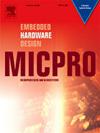Analog to digital memory modeling for test
IF 2.6
4区 计算机科学
Q3 COMPUTER SCIENCE, HARDWARE & ARCHITECTURE
引用次数: 0
Abstract
Memory testing is crucial as memories play an ever-increasing important role in modern computing systems, to which a memory malfunction can lead to a system failure. Memory testing is commonly addressed by a functional testing approach that consists in verifying the manufactured memory function. Functional testing focuses on identifying memory functional failure mechanisms, which are modeled by Functional Fault Models (FFM), and for which dedicated test algorithms are developed to ensure their detection. However, as technology shrinks, fault mechanisms in memories become more complex, as well as their detection conditions. To anticipate any limitation, memory structural testing is investigated. Structural testing proposes to study the defect before the fault, as one or several manufactured defects or imperfections may be responsible for a fault. A structural test methodology for memory has been recently published and proposes to adapt the Cell-Aware test methodology from the digital domain to analog memories. As the resulting Structural Fault Models (SFM) for analog memory are compatible with digital test environment, this work proposes a digital SRAM modeling methodology, compatible with digital simulation and test environments, leveraging Fault Simulator for test algorithm coverage analysis, and Automatic Test Pattern Generator for dedicated and optimized defect-specific test generation.
模拟到数字存储器建模测试
内存测试是至关重要的,因为内存在现代计算系统中扮演着越来越重要的角色,内存故障可能导致系统故障。内存测试通常通过功能测试方法来解决,该方法包括验证制造的内存功能。功能测试的重点是识别记忆功能故障机制,该机制由功能故障模型(FFM)建模,并开发了专用的测试算法来确保其检测。然而,随着技术的萎缩,记忆中的故障机制变得更加复杂,它们的检测条件也变得更加复杂。为了预测任何限制,研究了记忆结构测试。结构测试建议在故障发生之前对缺陷进行研究,因为一个或几个制造缺陷或缺陷可能导致故障。最近发表了一种存储器的结构测试方法,并建议将细胞感知测试方法从数字域调整到模拟存储器。由于模拟存储器的结构故障模型(SFM)与数字测试环境兼容,本工作提出了一种与数字仿真和测试环境兼容的数字SRAM建模方法,利用故障模拟器进行测试算法覆盖分析,并利用自动测试模式生成器进行专用和优化的缺陷特定测试生成。
本文章由计算机程序翻译,如有差异,请以英文原文为准。
求助全文
约1分钟内获得全文
求助全文
来源期刊

Microprocessors and Microsystems
工程技术-工程:电子与电气
CiteScore
6.90
自引率
3.80%
发文量
204
审稿时长
172 days
期刊介绍:
Microprocessors and Microsystems: Embedded Hardware Design (MICPRO) is a journal covering all design and architectural aspects related to embedded systems hardware. This includes different embedded system hardware platforms ranging from custom hardware via reconfigurable systems and application specific processors to general purpose embedded processors. Special emphasis is put on novel complex embedded architectures, such as systems on chip (SoC), systems on a programmable/reconfigurable chip (SoPC) and multi-processor systems on a chip (MPSoC), as well as, their memory and communication methods and structures, such as network-on-chip (NoC).
Design automation of such systems including methodologies, techniques, flows and tools for their design, as well as, novel designs of hardware components fall within the scope of this journal. Novel cyber-physical applications that use embedded systems are also central in this journal. While software is not in the main focus of this journal, methods of hardware/software co-design, as well as, application restructuring and mapping to embedded hardware platforms, that consider interplay between software and hardware components with emphasis on hardware, are also in the journal scope.
 求助内容:
求助内容: 应助结果提醒方式:
应助结果提醒方式:


